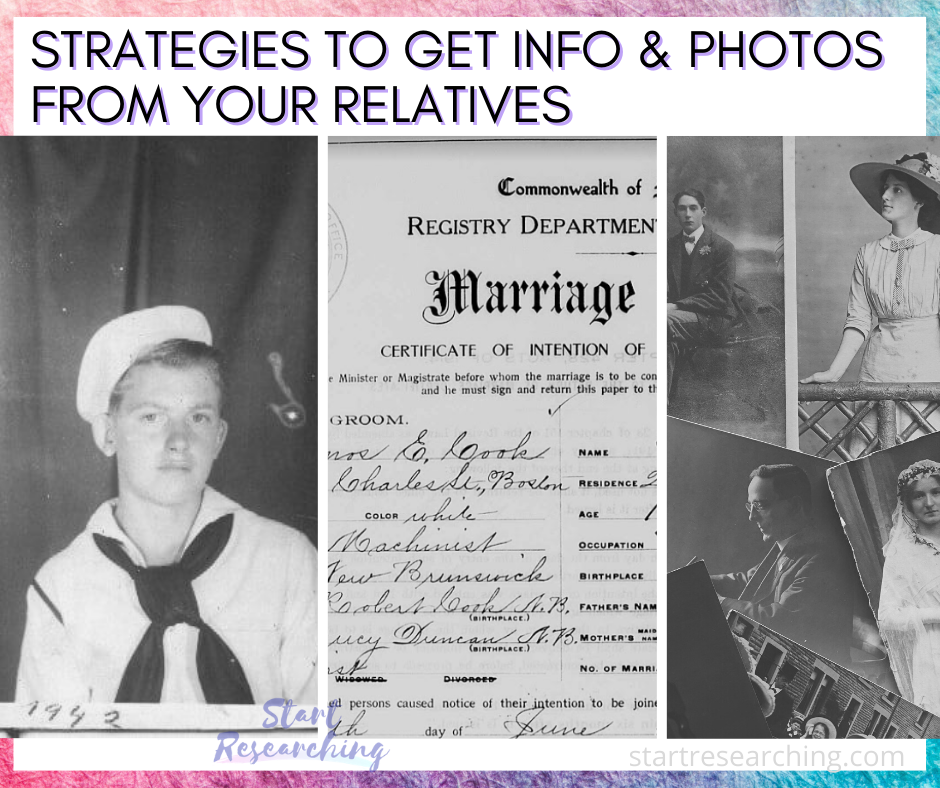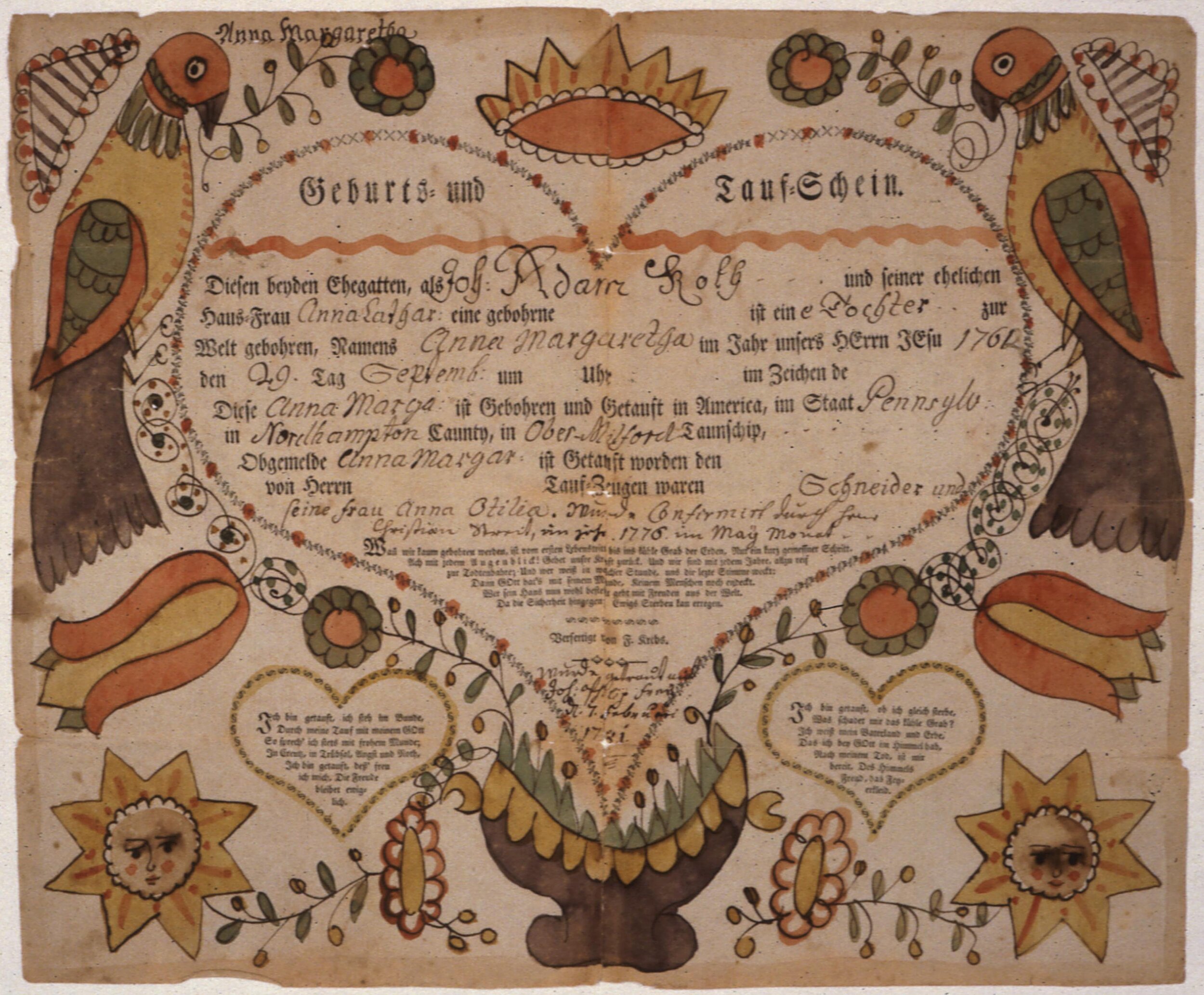Do you ever have the feeling your relatives are holding out on you? You just know they’ve got a box of family photos somewhere they’re either to lazy to find or to reluctant to share for some reason…
Or maybe you’re planning on attending a family reunion soon now that things are starting to open back up, and you know it would be a great opportunity to gather some family history, but you’re not sure how to go about it?
Do NOT send them a blank genealogical form to fill out - let’s just get that out of the way first. It’s tedious, and people have genuine (and legitimate) privacy concerns when it comes to sharing personal information, like their mother’s maiden name or their birthdate. It’s important to respect your relatives’ wishes, especially your living relatives, and never publicly share their information without their permission. When asking for their information, be clear with your intentions regarding your plans for the info they share with you. For example, if you plan to assemble all the data into a family history book that will be distributed among family, let them know and ask if they would like to be included.
The Strategies
1. Make yourself known to everyone as “the family historian”.
This may seem simple, but it works! When relatives know you value family history, they’re more likely to share with you. And if their children don’t want a family heirloom, they may think of you to inherit it.
You can make yourself known as the family historian by expressing interest when your relatives share stories or photos. Also share stories of your own discoveries, and ask questions about things you genuinely want to know.
2. Be clear about what you want
“An Antebellum era (pre-civil war) family bible dating to 1859” photo by David Ball, Wikimedia Commons, CC by SA 3.0.
Not everyone understands what kind of things would be valuable to a genealogist. Ask for specific items. Is there a Family Bible? Can I make a copy of your wedding certificate? Do you have your parent’s naturalization papers? Have a look at our list of home sources for inspiration.
3. Bring a notebook to family events
Whether it’s a family reunion, wedding, or even a funeral, bring a small notebook with you - but be tactful about it. In my experience people love sharing family stories and memories at events like these. Write down important names, dates, and locations. Later, when you have a moment to yourself, write down what you remember from the stories in greater detail.
You could also use your phone as a recording device when people are feeling chatty, with their permission of course (though it might be hard to get a quality recording in a loud, crowded event).
4. Share what you DO know
Not only does this strategy give others the opportunity to “fill in the gaps” of missing information, it allows them to offer corrections. And people love correcting others!
Be careful not to overwhelm someone with too much information. Rather than sharing your whole family tree, break it down into smaller sections based on your audience. Write up a summary of one family at a time, and include dates of important events (like births and weddings) and relationships (parents, spouses, children, and so on). Keep it simple and easy to read.
Print it out (in extra large print if your audience is older) and hand it to them with a pencil or pen so they can easily make notes. Or mail / e-mail your summary.
I would include a list of sources, and offer to show them any if they have questions.
5. Conversely, share what you DON’T know
Give your relatives a specific mission they can help you with, or a problem they might be able to solve. For example, I told my Aunt I had never seen a picture of my paternal great grandmother, and in just a few days she was able to provide one to me!
6. Give them time to prepare before a visit
Just a simple heads up, like “Hey grandma, I was wondering if you could find the family photo albums before I visit this weekend?” has a much higher success rate than asking for family photos after you arrive. They may have forgotten where they stored something, or need time to organize their collection of photos. Or they may even have personal items, like birth certificates, held in storage at a bank and need time to retrieve them.
7. Bring scanning devices with you every time you visit (or use your phone)!
There are some relatives I only have the opportunity to visit with once or twice a year, and I always pack my little portable scanner and laptop with me when I go, and have had many successful trips in which I gained new photos and valuable information. I like this Brother mobile scanner (Amazon affiliate link).
I’ve discovered people, in general, are much more likely to allow you to scan a photo or document and immediately hand it back to them, then they are likely to let you leave their sight with anything. If someone said to you, “Hey, can I make a copy of your wedding certificate right now?” versus “Hey can I have your wedding certificate? I’ll return it to you as soon as I can.” Which option would you rather do?
I’ve also found that scanning items, like photos, in front of someone allows them time and motivation to discuss the photos with you. They can help identify people, tell you details about what’s going on in the picture, and offer stories you may not have heard before.
If it’s too difficult to bring a scanner and a laptop with you on your visit, or too hard to take photos off the wall and out of their frames (or perhaps the photo is too big for your scanner), you could take pictures with your phone. Some phones also have scanning features (with an iPhone, use the Notes app), or other scanning apps may be available to download.
Be sure to write detailed notes to help identify the items in the photographs, and transcribe any details. Take great care when scanning, and never write on documents or photos.
8. Ask for photographs of family heirlooms
“United States Military Medals & Insignia” from Flickr user Gary Todd, public domain. Items like military medals may be passed down within families, and could provide clues to a person’s military service.
People like to hold on to things, especially family treasures. They may not have even told anyone what they have in their possession for fear someone might try to claim it as their own. Or perhaps they have an item or two passed down to them that they’re holding on to for their own children, like a quilt their grandmother made or a family recipe book.
If you are visiting, ask them if they have any such items and carefully photograph them, while asking for information about the object. When you get home you can add the photo to your inventory, labeled, with the story attached. If you live to far to visit, ask them if they wouldn’t mind taking a photo or two of the object to send for your reference.
Some items can help us in our genealogy research by offering clues, like an engraved pocket watch, a high school ring, or a military medal. Other items, like a wedding dress, can be a bit more sentimental. All of these items offer a tangible connection to the past and give us context about how how our ancestors lived their lives.
9. Create a Facebook Group for your relatives
This strategy has been the most successful for me, though it’s worked better for one side of my family than the other. Facebook is free to join, and you are allowed to create as many groups as you’d like. Many of your family (especially the older generations) are probably already members.
I setup the group so that each family has their own photo album within the page. Anyone within the group can contribute and comment on photos, or share anything they want. I have the group set to “private” so that no tags or comments will show up to others outside of the group - but be aware people in the group can still download the photos and upload them anywhere they wish.
Note that Facebook does not automatically upload high resolution photos, this is a setting you have to manually select. Not everyone will remember to do this, but you can always request higher quality copies of originals from the person who posted them (or scan them yourself on your next visit), now that you know who has them!
I’ve seen so many new photos of my ancestors, gotten help identifying some old photos, and learned some interesting stories with this method and highly recommend it.
10. Reach out to everyone
Usually our instinct is to reach out to the older members of our family, but we can’t overlook the younger generations. They may have inherited photo albums, quilts, dishes, or other family artifacts. They may have their own memories to share with you, or new information to tell. Be sure to reach out to descendants of divorced marriages, and second or third marriages as well (or even those of second families or out-of-marriage offspring). Everyone has a story to share, and we need all sides of a story to form a complete picture.
Box of old photos. How great would it be to get something like this from a relative? Photo by Roman Kraft on Unsplash
Keep detailed notes about where you got your information, including what was said, who shared it with you, and when. Always cite your sources and keep records.
We do not write on photographs or documents. Take care when handling them, and preserve them when possible.
Show your appreciation with a thank you note. If they give you a whole treasure box of photos or documents, maybe send them a gift as well!













